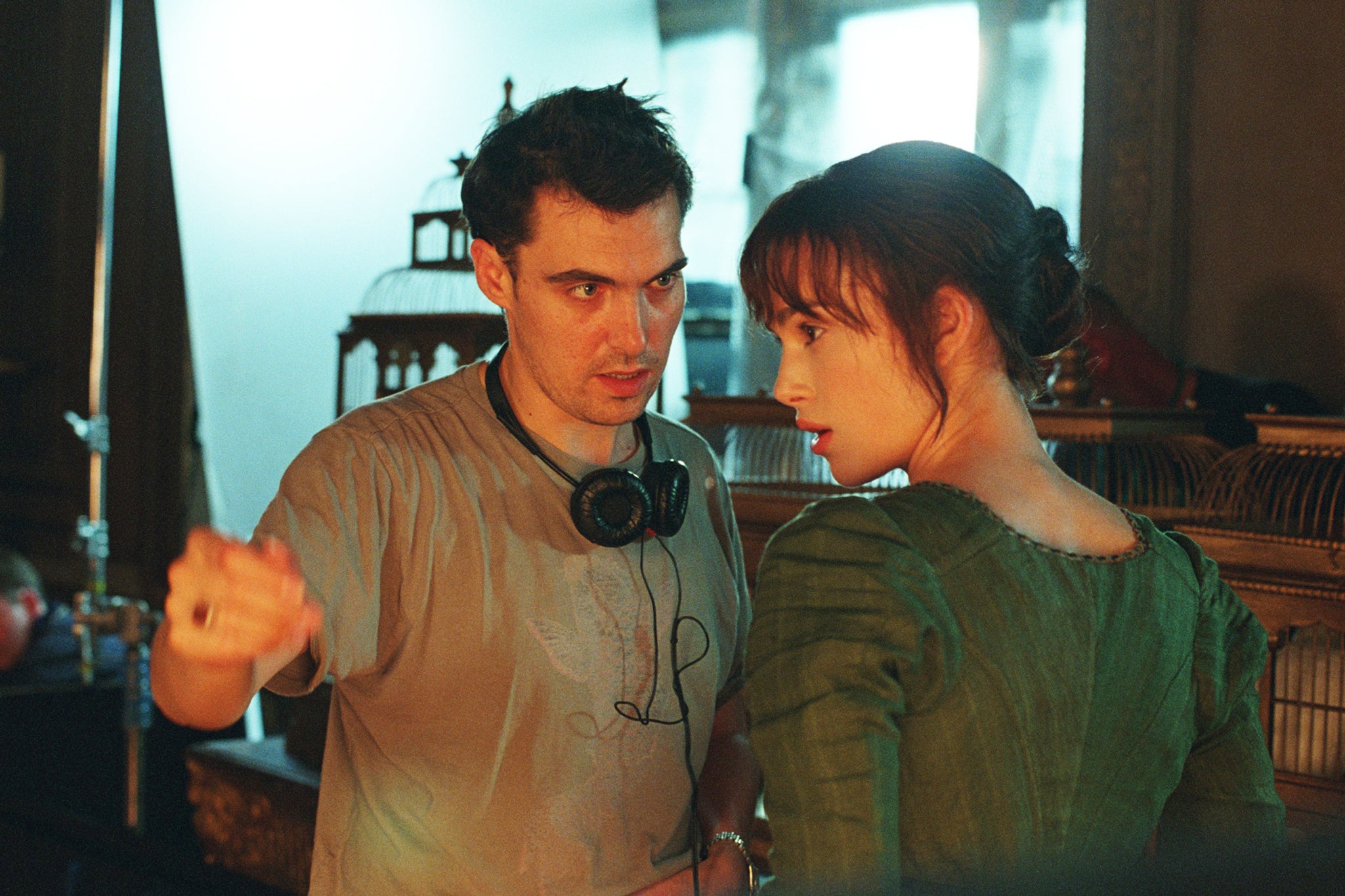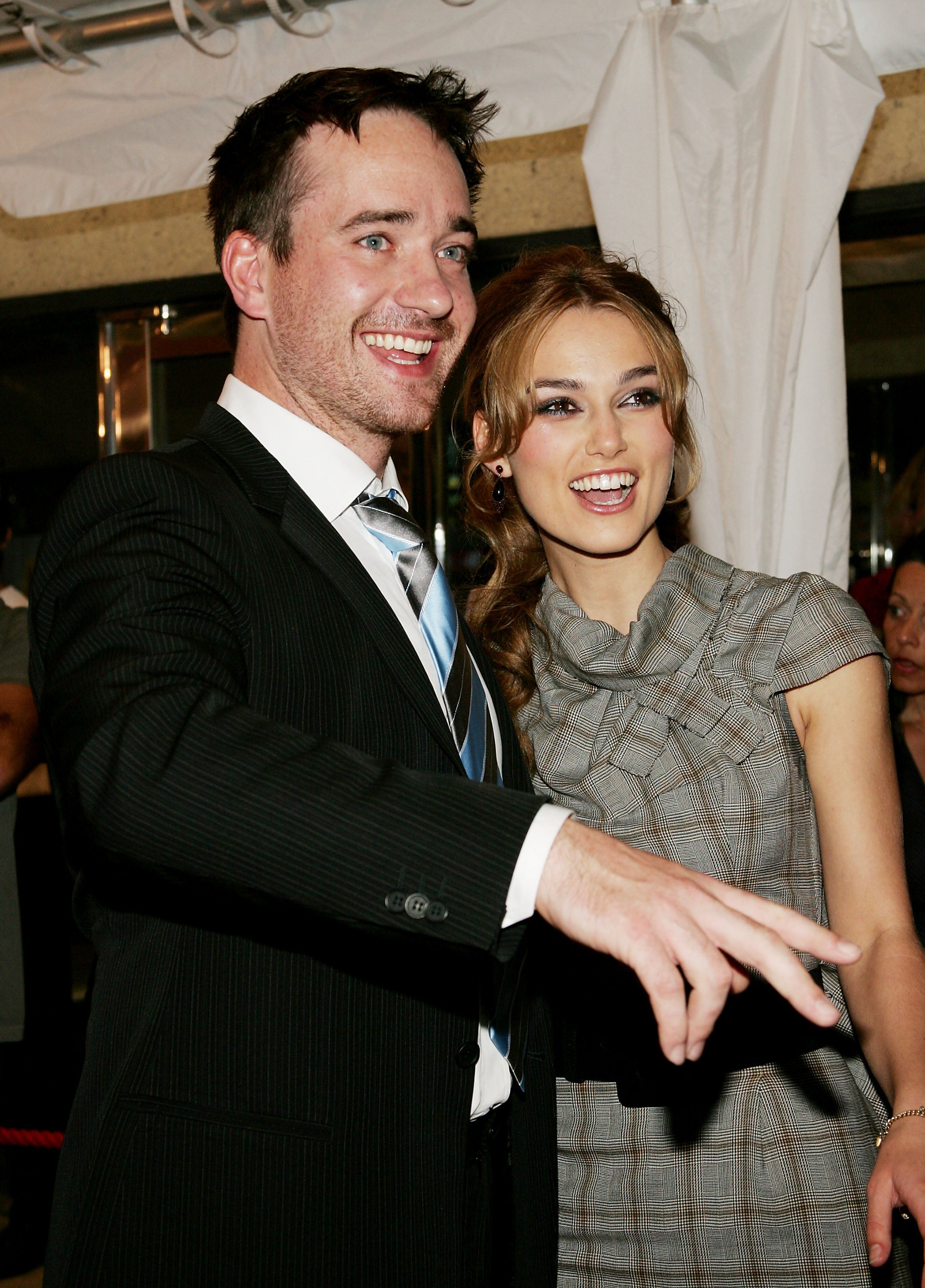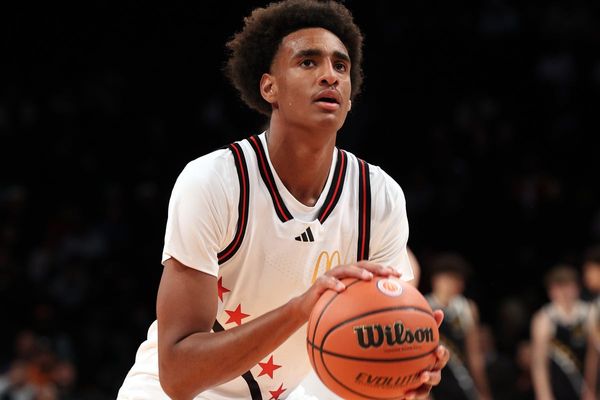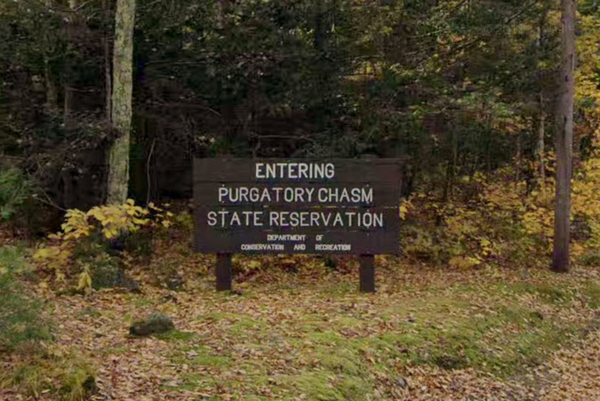Conventional wisdom tells us that there are five love languages: gifts, acts of service, quality time, physical touch and words of affirmation. But, as fans of Joe Wright’s 2005 adaptation of Pride & Prejudice well know, there is a secret sixth: the hand flex. Those three words refer to a brief, narratively insignificant moment never described in Jane Austen’s 1813 masterwork. Elizabeth Bennet (Keira Knightley), the second-eldest of five sisters all out on the marriage circuit, has arrived at Netherfield Park to visit her sibling Jane (Rosamund Pike), who’s been incapacitated by a cold caught while riding out in the rain to see the handsome and wealthy Charles Bingley (Simon Woods) – exactly as their artful mother (Brenda Blethyn) has planned it.
Bingley’s closest confidante, Mr Darcy (Matthew Macfadyen), is there. Elizabeth finds him haughty and sullen. They trade subtle barbs while they await Jane’s recovery. Finally, the sisters bid the residents of Netherfield Park farewell and mount their carriage home. Only this iteration suddenly cuts close in on Elizabeth’s expression. She looks down in shock – Darcy’s palm has cradled hers, guiding her gently up to her seat. He doesn’t speak. He turns away with barely a moment’s eye contact.
Then, the camera goes in for the kill: a close-up of Darcy’s fingers splayed out as the muscles contract, as if he were trying to shake off the ghost of her touch. This, the so-called “hand flex”, perfectly encapsulates the kind of romantic euphoria that’s attached itself to director Wright’s take on Austen’s novel, which returns now to UK cinemas to mark the 20th anniversary of its release.
Pride & Prejudice was well received on release, earning four Oscar nominations – among them Best Actress for Knightley – and full marks from critic Roger Ebert, who declared it “one of the most delightful and heartwarming adaptations made from Austen or anybody else”. Yet for the film’s millennial and Gen Z audience, it’s grown into something bigger and more definitive, a milestone of their youths and romantic developments.
Online, the words “hand flex” – despite the moment having originated as a bit of improvisation from Macfadyen – have become a shortcut for any tortuously subtle expression of desire. American distributor Focus Features, as part of the film’s rerelease, has started selling “hand flex” merchandise, including T-shirts and pins. Artist Jenna Lee Ahlman, meanwhile, paints and sells her own interpretations of the scene.
“The first time I saw [it] I was atomically altered,” she tells me. “It is the epitome of the female gaze. He literally was so overwhelmed by a mere touch that he had to physically react to it? Melt me like an ice cream sundae.” At first, she’d simply chosen the scene as a reference for a study of hands, “but I did not anticipate me getting butterflies as I painted it. I was giggling the entire time and I feel like I was able to infuse all that with trepidation into the piece. Now I can’t stop.”
It’d be easy to psychoanalyse the millennial and Gen Z attachment to the “hand flex” as a subconscious rejection of our increasingly digitised and depersonalised dating landscape. There’s no equivalent to the “hand flex” on Tinder; no way to communicate silent yearning in a way that doesn’t inevitably read as ghosting. Yet, Wright’s tactile approach to Pride & Prejudice, and its origins in Deborah Moggach’s script, is about more than romanticised emotional repression – it’s a way to subtly reveal the psyche of his characters to the audience before even Austen does so in her work.
As Ferdosa, a critic and period drama aficionado who writes for Muses of Media, tells me, “to truly appreciate the hand flex, you need to see and recognise the precursor, the double-take. As Mr Darcy, flanked by the Bingleys, crosses the dance hall, he spots Elizabeth, and his head jerks back and forth. He thought he was slick with the quick recovery, but poor Mr Darcy got caught. He had an instant ‘love at first sight’ reaction.”
The 1995 BBC TV adaptation of the novel, fronted by Jennifer Ehle and Colin Firth and featuring its own delirium-inducing sequence of Mr Darcy emerging, wet-shirted, from a lake, undeniably remains the most faithful adaptation of Austen’s novel. Ferdosa, though, considers Wright’s adaptation to be “concise while remaining authentic to the source material”, condensing its protracted courtships into these subtle, but provocative presentations of desire (an underrated moment: a lovesick Bingley, following Jane across the dance floor, giddily clutches a ribbon at the back of her dress and allows himself to be led around like a pet).
It’s most effective, then, less as a literal translation (drop the pitchforks, purists) and more as a threshold into Austen’s world, deftly reenergised for a new generation. “I could probably thank Joe Wright for introducing me to Jane Austen because I went wild into her works for a bit because of it,” Ahlman notes.

Writer and academic Dr Gabrielle Malcolm, who edited the essay collection Fan Phenomena: Jane Austen and wrote There’s Something About Darcy, the latter dedicated entirely to the study of “Darcymania”, argues for the role of these more accessible adaptations as a sort of skeleton key for those new to Austen’s prose.
“I have spoken to many international Austen fans over the years and that’s what they can keep coming back to,” she tells me. “Until their study of English became good enough to read the original novels, they had the adaptations, which helped them to understand and follow the narrative and get a sense of the society. That type of scene – the ‘wet shirt’ or the ‘hand flex’ – results in a shorthand and a universal vocabulary for Austen fans around the globe. We know what’s meant by it – we ‘get it’ – just as Austen got it too!”
What’s lost in the mix is some of the “brilliant savagery” of Austen’s satire, and “the defiance and rebellion that the novel possesses”, blunted in favour of more explicitly romantic (and more explicitly likeable) iterations of Elizabeth and Darcy. For Austen, their marriage was not only a victory of the heart, but a victory against strict social hierarchy. The author was, as Malcolm describes, “a champion of women’s agency, mobility, and decisiveness”, whose own sense of modernity was embodied by a line (cut from the film), in which Elizabeth firmly declares that Mr Darcy is “a gentleman, I am a gentleman’s daughter. So far we are equal.”
Moggach’s script minimises the presence of Darcy’s aunt, Lady Catherine de Bourgh (Judi Dench), and Bingley’s sister, Caroline (Kelly Reilly), who in the novel are presented as foils to Elizabeth’s social mobility. Wright, instead, expresses that tension by setting the film in the 1790s, when Austen first began work on a novel titled “First Impressions”, which would eventually evolve into Pride and Prejudice. In the time between the book’s conception and eventual publication in 1813, the effects of the industrial revolution would create what Malcolm calls more “subtle societal distinctions”.

Wright’s film, however, sticks to a stricter divide between town and country – between Darcy’s refined airs and the boisterous Bennet farmhouse, in which dogs, chickens, and one rather testicularly endowed pig will happily interrupt the action. To modern audiences, it’s that particular energy that sets it apart. As Ferdosa sees it, “It indulges in the splendour and romanticism of the era whilst being very grounded and gritty.”
According to Malcolm, Austen’s “use – her invention – of what we now call ‘free indirect narrative style’” is at the heart of her enduring popularity, in her ability to shift rapidly between tones and perspectives, inserting her own voice and wit into the story. “That’s why fans like her, as a person, and believe they could be friends with Jane herself!” she adds. And there’s some sense of that connection between audience and storyteller in Knightley’s performance, particularly in her eyes, which volley between mischief, incandescence, and anger, but seem always to invite us, the viewer, in to share that emotion with her.
There’s also a striking emotionality to Macfadyen’s Darcy. He’s less sturdy and arrogant than previous iterations, instead “a deeply loyal introvert who will protect those he loves”, as Ahlman describes. “Darcy is more of a sympathetic character. You see him with his slutty clavicle strolling across the field and it’s peak romance!” But that broodiness (and that “slutty clavicle”, too) has led Malcolm to suggest that “Macfadyen’s Darcy hovers into a more Victorian mode – like Jane Eyre’s Mr Rochester – than a Regency gentleman.”
“The early morning scenes of Darcy walking across the fields in the mist – that’s straight out of Brontë country! Where Charlotte did not like or approve of Austen’s work, I think she would have liked this version!” Brontë, too, can be spotted in the shot of Elizabeth standing on a gritstone ridge looking dramatically out at the Peak District’s Hope Valley, wind whipping at her coat. Austen died a year after Charlotte Brontë was born. It’s hard to say if she would have equally disapproved of Jane Eyre’s feverish passions.

But for Wright, clearly, the trick worked. He adapted Ian McEwan’s Atonement (2007) and Leo Tolstoy’s Anna Karenina (2012) in much the same way, establishing a trend of largely faithful though spirited period adaptations that Ferdosa points out have only recently been challenged by “costume dramas that are anachronistic, postmodern interpretations driven by aesthetics and pop culture” – the obvious one, of course, being Netflix’s Austen-lite series Bridgerton. That said, would Simon Basset (Regé-Jean Page) have ever licked that spoon if it weren’t for “the hand flex”?
Whatever the case, Pride & Prejudice will live on happily in the hearts of its fans, a constant reminder that a woman born almost 250 years ago shared in our same feelings of heartbreak, of sisterhood, and of being 27 with no money and no prospects. “My fondest memory of watching Pride & Prejudice was during a rough time in university,” Ferdosa says. “I revisited the film and, for the first time ever, I was struck by the thought, ‘The Bennets are so Somali-coded.’ The time, place, character’s religion, ethnicity, and manner of speaking were foreign to me, but I felt connected. I felt seen.”
“Anytime I felt sad or hopeful as a kid, from my first heartbreak to birthday celebrations to my bachelorette party to healing after two C-sections, Pride & Prejudice was a constant,” Ahlman adds. “This movie has carried me through my entire life.”
‘Pride & Prejudice’ is back in cinemas from 25 April
Pride and Prejudice fans have Matthew Macfadyen to thank for ‘hand flex’ scene
Emma Thompson improvised unforgettable Charlotte Lucas line in Pride and Prejudice
Netflix’s Pride and Prejudice casts its Elizabeth Bennett and Mr Darcy
17 writers who criticised adaptations of their work
How Leonardo DiCaprio started – and abandoned – his ‘bad boy’ era







